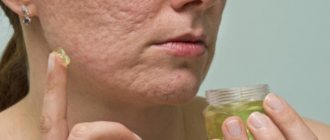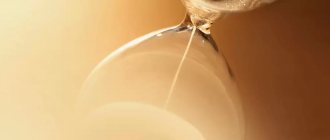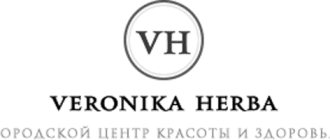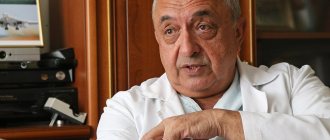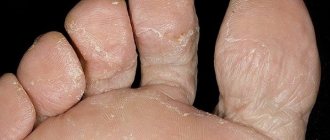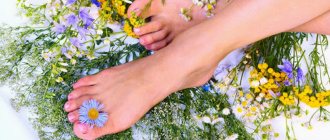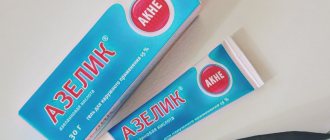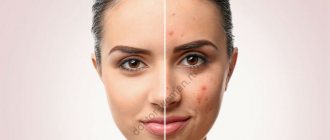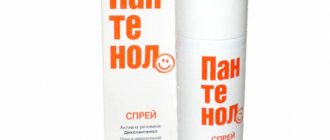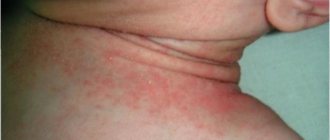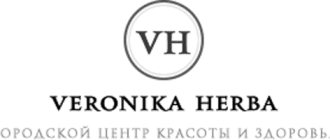Every person has encountered various types of skin damage more than once in their life. Such problems can be caused by a variety of reasons, ranging from domestic injuries to adverse environmental factors.
It is impossible to avoid skin injury in everyday life, but such damage can be treated. For this purpose, special creams and ointments can be used to heal wounds on the skin, which differ from each other in some characteristics. Before using this or that drug, you must read the instructions and consult your doctor.
Main types of chronic wounds
- Diabetic foot syndrome (DFS) is a set of anatomical and functional changes that develop against the background of diabetes mellitus, increasing the risk of injury and infection of the soft tissues of the foot. According to the World Health Organization, the risk of developing DDS in diabetics with 5-10 years of experience is about 15%. For diabetics with more than 15 years of experience, it increases to 90%.
- Prevention: protecting feet from injury, comprehensive foot and nail care, wearing shoes for diabetics.
- Trophic ulcers are complications of venous insufficiency caused by changes due to thrombophlebitis or deep vein varicose veins. Poor circulation and blood supply to the legs leads to venous congestion, and this leads to the formation of poorly healing ulcers on the ankles or legs.
- Symptoms are swelling, impaired skin pigmentation (redness or pallor), eczema, a feeling that the legs are bursting from pressure (more often in the evening).
- Prevention: timely treatment of the underlying disease, wearing elastic tights, treating the skin with antiseptic and healing agents.
The best healing ointments for children
The last subsection of the review contains the best formulas according to Vyborexperta.ru for treating children. They are distinguished by their naturalness, safety of ingredients, speed of action and convenient use.
Baneocin
A two-component antibacterial agent approved for use from 2 years of age. Prescribed for focal skin infections, impetigo, carbunculosis, dermatoses, furunculosis and burns. Produced in Austria.
The active formula is based on a combination of 2 components: bacitracin, neomycin. The first is an aminoglycoside that blocks bacterial protein synthesis. The second polypeptide antibiotic that affects microbes by disrupting cell wall synthesis. Resistance to such contents develops extremely rarely.
Thanks to the aluminum tube, the contents are easier to squeeze out. The consistency is dense, oily, yellowish in color with a moderate odor. Apply a thin layer 2-3 times a day for no longer than a week, spread easily.
Advantages:
- Combined antibiotic;
- Wide spectrum of antimicrobial activity;
- Comfortable texture;
- Convenient packaging;
- Rapid development of positive dynamics;
- Economical consumption.
Flaws:
- Price;
- Contraindications.
To increase the effectiveness of local treatment, applying a bandage is practiced. Regardless of the complexity of the skin lesion, the ointment does not cause burning or discomfort. Consumption is economical due to its convenient texture.
Cycaderma
Homeopathic medicine with a minimal list of contraindications. The complex formula has a beneficial effect on all stages of skin regeneration. Changes are observed already on the first day of use. Manufactured by Boiron, France.
Calendula serves as an antiseptic, St. John's wort stops the inflammatory process and relieves pain due to damage to nerve endings. Yarrow prevents bleeding, wild rosemary soothes irritation. Lumbago is an antifungal, antimicrobial component. Vaseline moisturizes and softens.
The aluminum tube contains 30 g. Inside the consistency is light yellow, very greasy, thick. It smells like herbs, the aroma is natural and pleasant. It is recommended to smear 1-2 times a day, no longer than a week.
Advantages:
- Homeopathy;
- Plant components;
- Multifunctionality;
- Natural smell;
- Quick effect;
- Non-toxic.
Flaws:
- Possible allergies to herbs;
- Inconvenience of an aluminum tube.
Indications for such a universal remedy include superficial wounds, 1st-2nd degree burns, and insect bites. Age restrictions: children over 1 year old. Application to mucous, open, weeping, infected wounds is contraindicated.
How to cure a chronic wound?
But what to do if prevention does not help? Treatment of long-term non-healing wounds depends on their type, the condition of the patient and the underlying disease. The main thing is to identify the root cause of the resulting pathologies in order to prevent the condition from worsening.
Treatment of diabetic foot syndrome:
- Taking antibiotics prescribed by a doctor against infection, treating and cleaning wounds by the doctor himself.
- Quitting bad habits and reducing the load on the foot.
- Selection of shoes and socks on the recommendation of a doctor, changing them regularly.
- Continue therapy at home: clean the wound, monitor discharge, and protect it from infection.
Treatment of trophic ulcers:
- Conservative therapy - taking medications to eliminate the symptoms of trophic lesions: antibiotics, phlebotonics, antiplatelet agents, as well as ointments for treating the skin (Solcoseryl, Actoverig, Tocopherol).
- Treatment of affected tissues with an ointment containing an antiseptic, an anesthetic or enzymes that accelerate healing (Levomekol, Levosin, Curiosin). Used with compresses.
- Surgery – after the ulcers have healed, the doctor restores blood flow through shunting and phlebectomy.
Treatment of bedsores:
- Restoring blood circulation using anti-decubitus circles, anti-decubitus mattresses, pillows.
- Cleansing the damaged area of necrotic tissue. If necessary, the doctor prescribes antibiotics to prevent infection. Surgical removal of necrotic masses is also possible.
- Procedures for healing bedsores include regular dressings with the use of wound-healing drugs.
What is the difference between ointment, cream and gel?
The same active substance can be produced in different forms, and this is not done by chance. If we consider skin lesions and the products that are used to treat them, we can distinguish the following differences:
- The healing ointment for cuts contains a large amount of fat, due to which the depth of penetration of the active substance increases. This dosage form is well suited for the treatment of dry lesions. The ointment can be applied directly to the wound or under a bandage.
- Cream, unlike ointment for healing cuts, contains a lower percentage of fat. It contains oils, water and emulsifying agents. The depth of penetration of the active components is less, but the cream is absorbed faster, does not leave greasy marks on clothes, and is excellent for application to thin, delicate skin.
- The basis of the wound healing gel is water. There are no fats or oils in its composition. Due to this, rapid absorption is achieved, but the depth of action remains minimal. It is recommended to use the gel for wound healing in cases where there is copious discharge - blood or exudate.
Some people prefer to use ointment alone to heal deep cuts because they find it more effective. In fact, each dosage form has specific properties and is suitable for use in specific situations. It is not advisable to treat any damage to the skin with ointments alone. A doctor should prescribe one or another dosage form after examining the wound. In some cases, an ointment will be more effective for healing deep cuts, while in others, a cream or gel will be more effective. These features are important to consider when choosing a drug.
Products and dressings for the treatment of chronic wounds
The course of therapy is selected by the attending physician; you should not self-medicate - this can lead to a worsening of the situation.
Gels and solutions for rinsing and cleansing
- Gels fill subcutaneous pockets and cavities, providing an antimicrobial effect (Prontosan gel), cleanse necrotic masses (Askina gel, Hydrosorb gel), form an optimal environment for healing (Purilon gel), and work as an anti-inflammatory antimicrobial agent (Emalan collagen hydrogel).
- Prontosan sterile solution is suitable for preventing infections, cleaning and moisturizing wounds, helping in tissue regeneration and suppressing pathogenic microflora.
Ointments for the treatment of dermatoses
Preparations of this action are non-hormonal healing agents for facial skin. They can be used for a long time to treat dermatoses and other skin lesions not only in adult patients, but also in children. They are not harmful to health and do not affect hormonal balance. The disadvantage is that with long-term use they can cause allergies and do not have the desired effect.
This group of medicines includes preparations based on Panthenol, containing zinc, and also based on natural substances.
Preparations containing Panthenol
Products with Panthenol have a restorative effect on cuts, burns and chemical damage. Stimulate the production of collagen fibers and accelerate scar formation, eliminate pain and swelling, and relieve minor inflammation.
Examples of medicines with Panthenol:
- Eplan;
- D-Panthenol;
- Astroderm;
- Bepanten and others.
D-panthenol
This remedy has a quick effect and allows you to heal damage in a short time. The cream helps well in the treatment of household injuries, burns, frostbite, abrasions and scratches.
It has no contraindications and can be used even for children. D-panthenol must be applied to damaged areas several times a day.
Bepanten
The active component of the ointment is dexpanthenol. It accelerates regeneration and stimulates metabolic reactions.
The drug relieves inflammation and strengthens local immunity. Bepanten can also be used as a prophylactic agent. Analogues are Panthenol and Dexpanthenol ointments.
Astroderm
This effective and safe drug has a natural composition and contains panthenol as an active substance. The product can be used to treat large lesions of the epidermis, as it protects against infection.
Astroderm can be used as a prophylactic against the negative effects of the environment on the skin. Thanks to the panthenol included in the composition, the ointment has an analgesic effect.
Zinc based
Preparations of this type contain zinc compounds. They should be used to treat dermatoses, heal abrasions and ulcers. They destroy pathogenic microflora, have a drying effect, promote rapid wound healing, and do not affect hormonal levels. After application, such products create a protective film on the surface of the wound.
An example of a drug with zinc compounds is Agrosulfan.
Argosulfan
This ointment contains silver and zinc ions and has an antibacterial effect on the affected area. Active components slow down the growth and division of bacterial cells and eliminate infection, relieve pain and promote rapid healing.
Argosulfan can be used to treat a variety of burns, frostbite, household injuries, dermatitis, purulent and trophic ulcers, including diabetes. The cream quickly restores damaged areas, eliminates itching and pain. It can be applied under a bandage or rubbed into the skin.
Natural based ointments
The composition of such preparations includes natural plant extracts. They can help heal not only dermatoses and open wounds, but also hematomas that form after a bruise. Due to their natural composition, such ointments do not have a negative effect on hormonal levels and have virtually no contraindications for use.
Examples of natural ointments are:
- Vishnevsky ointment;
- Get better;
- Cycaderma;
- Doctor;
- Ichthyol ointment;
Other means:
- Rescuer is a drug in the form of an ointment, used to treat wounds, abrasions, burns, dermatoses, hematomas and other skin injuries;
- The drug Ai-bolit in the form of a cream based on plant extracts is used to eliminate dermatoses, heal wounds, burns, abrasions and other skin damage.
Vishnevsky ointment
The main active ingredients of this drug are tar, xeroform and castor oil, which free the wound from infiltration. Vishnevsky ointment draws out pus and helps purulent formations break through.
Thanks to the use of this remedy, wounds heal quickly. It is recommended to use the ointment to treat old or newly formed lesions with traces of pus, signs of infection and inflammation.
Get better
This cream is recommended for use to accelerate the healing of wounds, bruises and abrasions in children. But it is not suitable for treating serious dermatological damage.
The composition includes natural vegetable oils and vitamins. The cream relieves pain, has a nourishing and moisturizing effect. It has no contraindications other than individual intolerance.
Cycaderma
This drug contains plant extracts as active substances. Therefore, it can be used without fear even for treating children.
Cikaderma ointment is a homeopathic remedy. It has a restorative effect and promotes regeneration of damaged areas.
Doctor
This product is available in the form of a cream, which is recommended for the treatment of minor damage, peeling and microcracks. It contains plant extracts, including aloe.
Cream Healer can be used not only for treatment, but also to prevent the formation of dermatological lesions. Has an effective nourishing, moisturizing and softening effect.
Ichthyol ointment
This product has a disinfectant effect. The active substance in the composition is the natural substance ichthyol. As auxiliary components - plant extracts, glycerin and paraffin. The drug has a good anti-inflammatory effect and accelerates the healing of various skin lesions.
It is recommended to apply the product several times a day until the damage heals. Individual intolerance is considered a contraindication.
Other applications
The universal effect of the ointment allows you to treat gynecological diseases. Doctors often recommend the drug for healing ruptures and tightening of sutures.
1. It is practiced for hemorrhoidal cones. Means:
- restores damaged areas;
- strengthens the immune system;
- relieves inflammation;
- heals cracks.
The ointment is used twice a day. It is applied to the bumps and spread on the skin around them.
2. For the treatment of acne. The ointment has a wound-healing effect; it can be used to treat various rashes and suppurations. These are ordinary acne on the face. Quite often they appear in teenagers. The cream does not guarantee absolute health, but the overall condition of the skin can significantly improve. The only drawback is the fatty mixture. It is usually applied in the evening or when you do not plan to go outside. The ointment is used to treat problem areas for 3 weeks, and the bluish, thin spots disappear.
3. For the prevention of age-related defects and stretch marks. It works well both in pure form and in combination with body milk. Methyluracil helps restore defective tissues and cells. It is used on the face, neck, and hands to even out fine wrinkles. When applied, unpleasant sensations may occur because it is oily. After some time, its remains can be blotted with a napkin. Typically courses last 7 days with weekly breaks.
4. The cream does a great job with dry skin on the elbows. The medicine relieves itching, removes peeling, softens the dermis of the elbow area.
